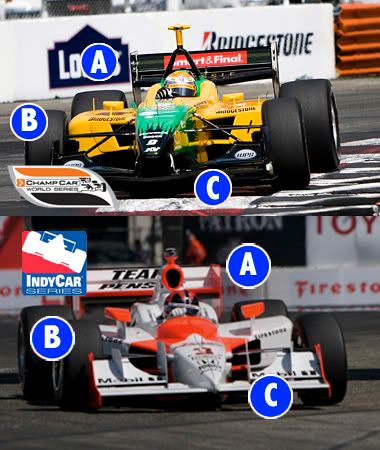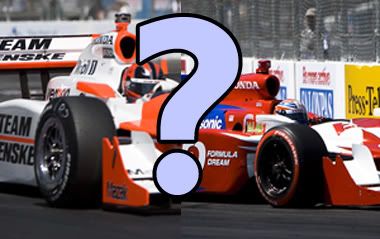
The 35th annual Toyota Grand Prix of Long Beach is shaping up to be a classic, and not simply because of the return of IndyCar after a 25-year abscence. Will Power has overcome seemingly impossible odds to capture pole position, some great times were posted in qualifying yesterday, and drivers with more street racing experience seem to have an advantage over the superstars of the sport.
But that doesn’t mean that anyone is out of the running. The field is wide open, and as Dario Franchitti told me yesterday, it doesn’t take long for talented drivers to catch up to the rest of the pack. So keep your eyes on the track today to see how everything plays out – until then, look below for three things about today’s main event that every racing fan should know.
1. Where Are The Big Names?
The allure of the 2009 Long Beach Grand Prix was supposed to be the superstar lineup of open-wheel drivers that were to grace the streets of Long Beach. And sure, it’s been great to see the likes of Tony Kanaan, Helio Castroneves and Danica Patrick blazing through the city. But so far, the weekend has been dominated largely by former Champ Car and less popular drivers. Of the top six qualifiers yesterday, only Scott Dixon and Dario Franchitti could be called household names – and then only because of each’s respective Indy 500 win. Other than that, former Champ drivers Will Power and Justin Wilson along with rising stars Rafael Matos and EJ Viso round out the top six. Castroneves will start in 8th, Kanaan in 11th and Patrick all the way back in 22nd. We’ll see if this is foreshadowing for the race outcome, or early weekend luck.
2. New cars
Obviously, one of the major differences between last year’s Grand Prix and this year’s Grand Prix will be the cars. When Champ Car merged with IndyCar last year, the Panoz chassis (shown in the top photo in the graphic below) was retired in favor of the Dallara chassis. This produces some key differences in body style, aerodynamics, and more. Let’s examine.

Both photos above by Russell Conroy
A – Engine
Whereas Champ Car used turbocharged Cosworth powerplants, IndyCar uses naturally-aspirated engines from Honda (this is why you’ll hear a “Raaarrr!” sound rather than a “Waaah!). The Hondas are much quicker when accelerating out of corners thanks to great low-end torque, but the Cosworths were far and away faster once the car gets up to speed. This is the reason for the drastically slower qualifying times that were posted yesterday. In 2008, Justin Wilson won pole position with a lap of 1:06.902, while Will Power won yesterday with a time of 1:09.710.
“Obviously it feels quite different,” Wilson told me yesterday. “You’ve got more response around the corner. It’s a very different feeling, especially coming out of the hairpin. Before you’d come out, squeeze the power and get nothing nothing nothing… and then a big bang. You’d spin the wheels and it would be a bit of a handful, whereas now it’s a lot more driveable.”
B – Front Wing
The bigger, heavier IndyCars are just not suited for the sharp turns of Long Beach. To achieve acceptable cornering, they need a great amount of downforce. This is why the front wings of these cars are so large – the more drag they can create, the easier it will be to control the car while at speed. It may slow the car down in the straights, but it’s worth the trouble to be able to handle Long Beach’s curves.
C – Nose
The Dallara chassis that IndyCar uses sports a sharp, downward sloping nose that comes to a point for achieving higher speeds on long ovals such as Indianapolis, while the gradual curve of the Champ Car is more effective for twisty roads.
3. Red vs. Black: The great tire debate

While you’re in your seat enjoying the sights and sounds of the day, you may notice that some of the IndyCars will be sporting solid black tires while others run in tires with a red ring around the outside. Here’s the reason: the black tires are less responsive but last longer, while the red tires have more tread and therefore are quicker – but have to be changed more often. This makes the reds better for qualifying sessions, while the blacks are ready for long distances. Nine of the ten top qualifiers used red tires in their session and will have to begin the race in them, so watch to see if they’ll need to pit earlier. Seven of the next thirteen used black, and may be able to stay on the track longer while their faster competitors pit. So when you see your favorite driver sporting one or the other, you’ll be able to follow their strategy.
